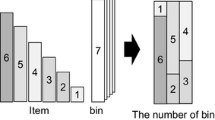Abstract
Automatic nesting acting as a CAM system in the shipbuilding industry has more constraints any other field nesting such as automobile, clothes and shoes. The nesting software has a large influence on the productivity of the shipbuilding industry while it is equipped with useful functions: automated operation system, user friendly interface, generation of stable cutting data and draft, and synchronization with ERP system. Many algorithms have been developed to decrease the scrap ratio and to increase the utilization of metal sheet plate. However, the satisfaction respecting to the minimization of computational time and scrap is not fulfilled yet. This study presents an attractive nesting algorithm to identify the scrap by defining the attributes while the ship parts are arranged by two-step method: the bitmap-based arrangement squeezes the part to the leftbottom side of the plate. Secondly, the re-arrangement step is carried out to further decrease the scrap while an overlap between parts is allowed and released by moving the previously placed parts. To increase the computational efficiency in the second step, the attributes of sub areas are used. The proposed method is validated using actual ship parts.
Similar content being viewed by others
References
Choi, J. C., Kim, B. M., and Kim, H. K., “A nesting system for blanking or piercing of irregular-shaped sheet metal products,” Journal of the KSPE, Vol. 14, No. 11, pp. 171–179, 1997.
Choi, J. C., Kim, B. M., and Kim, C., “An Automated Nesting and Process Planning System of Irregularly Shaped-Sheet Metal Product With Bending and Piercing Operation for Progressive Working,” Journal of the KSPE, Vol. 15, No. 6, pp. 22–32, 1998.
Lee, W. C., Ma, H., and Cheng, B. W., “A heuristic for nesting problems of irregular shapes,” Computer-Aided Design, Vol. 40, No. 5, pp. 625–633, 2008.
Tay, F. E. H., Chong, T. Y., and Lee, F. C., “Pattern nesting on irregular-shaped stock using Genetic Algorithms,” Engineering Applications of Artificial Intelligence, Vol. 15, No. 6, pp. 551–558, 2002.
Han, Y. K., “A Study on the automatic nesting system of irregular shapes,” Ph.D. Thesis, Dept. of Naval Architecture and Ocean Engineering, Seoul National University, 2000.
Kim, Y., Gotoh, K., and Toyosada, M., “Automatic twodimensional layout using a rule-based heuristic algorithm,” Journal of Marine Science and Technology, Vol. 8, No. 1, pp. 37–46, 2003.
Chengm, S. K. and Rao, K. P., “Quick and precise clustering of arbitrarily shaped flat patterns based on stringy effect,” Computer Industrial Engineering, Vol. 33, No. 3–4, pp. 485–488, 1997.
Lamousin, H. and Waggenspack, Jr. W. N., “Nesting of twodimensional irregular parts using a shape reasoning heuristic,” Computer-Aided Design, Vol. 29, No. 3, pp. 221–238, 1997.
Jokobs, S., “Theory and Methodology On genetic algorithms for the packing of polygons,” European Journal of Operations Research, Vol. 88, pp. 165–181, 1996.
Kim, D. S. and Lee, C. S., “Determination of an optimal sequence for nesting with heuristic algorithm,” CAD/CAM Conference, 2009.
Lee, E. K., Hong, W. P., and Choi, J. G., “Continuous Tool-path Generation for High Speed Machining,” International Journal the Korean Society of Precision Engineering, Vol. 3, No. 4, pp. 31–36, 2002.
Kim, H. C. and Yang, M. Y., “An Optimum 2.5D Contour Parallel Tool Path,” Int. J. Precis. Eng. Manuf., Vol. 8, No. 1, pp. 16–20, 2007.
Lee, C. S., Phan, T. T., and Kim, D. S., “2D Curve offset Algorithm for Pockets with Island using a Vertex offset,” Int. J. Precis. Eng. Manuf., Vol. 10, No. 2, pp. 127–135, 2009.
Lee, C. S., Heo, E. Y., Sim, J. H., and Kim, D. W., “Ship part nesting by pattern and group arrangement,” Robotics and Computer-Integrated Manufacturing, http://dx.doi.org/10.1016/j.rcim.2012.04.013, 2012.
Author information
Authors and Affiliations
Corresponding author
Rights and permissions
About this article
Cite this article
Lee, C.S., Heo, E.Y. & Kim, D.S. An efficient nesting algorithm recognizing the placing area. Int. J. Precis. Eng. Manuf. 13, 1917–1920 (2012). https://doi.org/10.1007/s12541-012-0252-7
Received:
Accepted:
Published:
Issue Date:
DOI: https://doi.org/10.1007/s12541-012-0252-7




